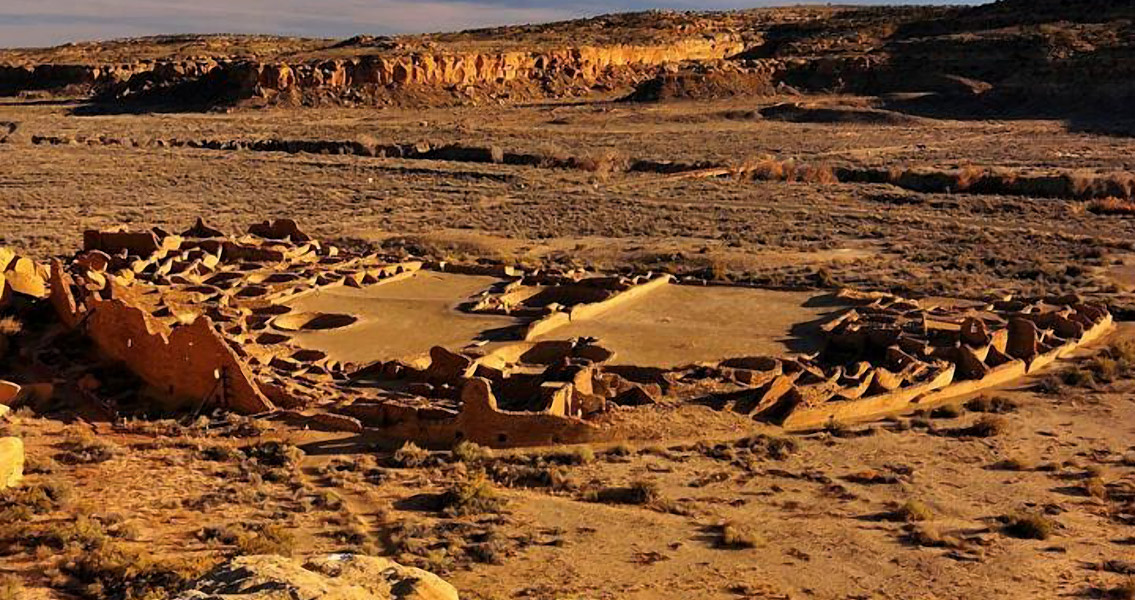<![CDATA[The disappearance of the ancestral Pueblo people is one of the biggest mysteries in archaeology, despite the extensive work which has been done studying the ancient North American civilisation. A new study, published in the journal Science Advances, provides a new explanation for the fate of the Puebloans, one which has parallels in the boom and bust social and economic cycles of today. Also referred to as the Anasazi, the pre-historic Native American Puebloans were centred around what is now known as the Four Corners area of the United States, a region including parts of modern day Arizona, New Mexico, Colorado and Utah. The current consensus among archaeologists is that the Pre-Colombian civilisation originated sometime around 1200 BCE. According to the authors of the new study, the Puebloans' disappearance was a cultural transition, and not a particularly unusual one. They claim that the changes which wiped the civilisation out had precedent in three similar, albeit less severe transitions over the preceding five centuries. The team's argument essentially states that major climate change events which resulted in serious droughts caused collapses in the canons of ritual, behaviour and belief practiced in the Puebloan societies. Each time the droughts decimated crops, social turmoil and violence quickly followed. "The process of releasing one's self from those canons, the process of breaking that down, can occur very quickly and occurred very quickly four times in the Pueblo past," said Kyle Bocinsky, a WSU adjunct faculty member in anthropology and director of sponsored projects for the Crow Canyon Archaeological Center in Cortez, Colorado; in a press release. WSU Regents Professor Tim Kohler, the project leader, and his colleagues went to exhaustive lengths to collect a massive data set for their study. Taking information from over a 1,000 archaeological sites in the South-Western USA, as well as 30,000 tree ring dates, they were able to form an image of the climate through the region's history. Through these climate reconstructions they were able to glean a remarkably clear picture of year to year changes in rain fall and temperature in the region. Maize was the main crop of the Puebloans, a plant whose yields can be utterly decimated in just a few years of drought. The earliest Puebloans grew crops in niches, tied together with ceremonies and rituals dependent on a belief in the supernatural. As droughts caused the key crop to fail, the belief system itself would have been called into question, along with the very fabric of the Puebloan society. "Then there's a point where people say, 'This isn't working. We're leaving,'" said Kohler, in the press release. The authors claim that a similar cycle was repeated each time the civilisation was hit by drought. A period of exploration when people searched for a new region to settle, followed by a period of exploitation and wealth creation, where a new value system was created alongside cultural change. A first period of exploitation took place between 600 and 700 CE, and is known as the Basketmaker III phase. Mild drought brought the period to an end, leading to the Pueblo I period in which the Puebloans developed the practice of storing maize above rather than below ground. The researchers claim it also witnessed a major cultural transition, free sharing of food replaced with exchanges restricted by certain powerful households. The Pueblo II phase lasted from 1035 to 1145, and witnessed the creation of large, shared houses and plazas. "We're talking some of the largest--actually, the largest--prehistoric masonry structures in North America north of Mexico," explained Kohler. Interestingly, the presence of greater disparity in the size and quality of housing suggests the society's social hierarchy had become even more firmly cemented. As with the previous periods, Pueblo II was brought to a close by a drought. Inequality seems to have peaked with Pueblo III, which was at its height in 1250 CE and was brought to an end by the worst of the droughts recorded by Kohler's team. Fascinatingly, the Pueblo IV period seems to have bucked the trend towards inequality. the architecture suggesting a much more civic minded society with equal access to urban facilities. "It's as if everybody has equal access to where all the important stuff happens," said Bocinsky. "That's been interpreted as being far more egalitarian in how people were organizing themselves as a society than what we see during any of the previous periods." Bocinsky and Kohler hope their model can be applied to other ancient societies to gain a better understanding of their rise and fall. However, they also suggest that echoes of the system can be seen in sections of modern US society still struggling to recover from the recession which began in 2008. "A lot of the nation has not recovered since 2008, and what you're seeing is a populist movement to radically reorganize the way that politics is done in this country," said Bocinsky. "We're seeing that need to reorganize four times in the Pueblo record." Put simply, as well as explaining the impacts of environmental disasters on ancient societies, Bocinsky and Kohler's model offers a new insight into the consequences of an economic calamity. Image courtesy of Nate Crabtree]]>
Ancestral Puebloans Were Hit By Boom and Bust
